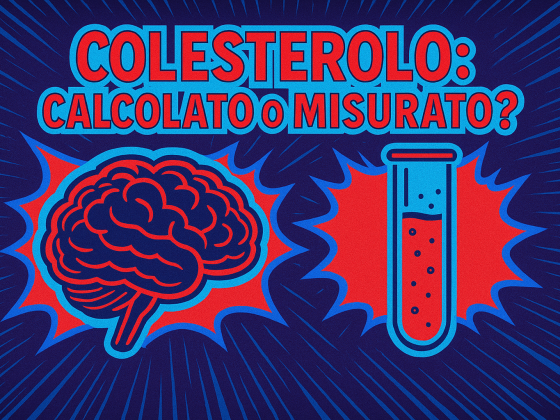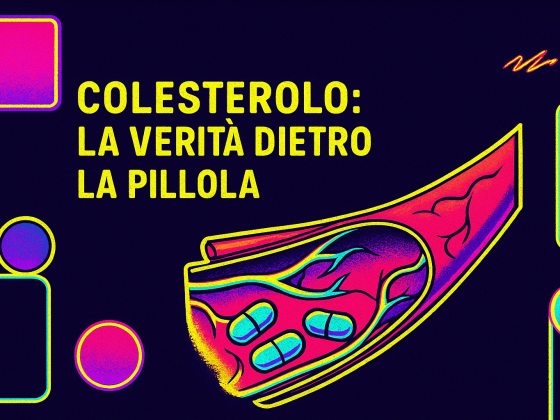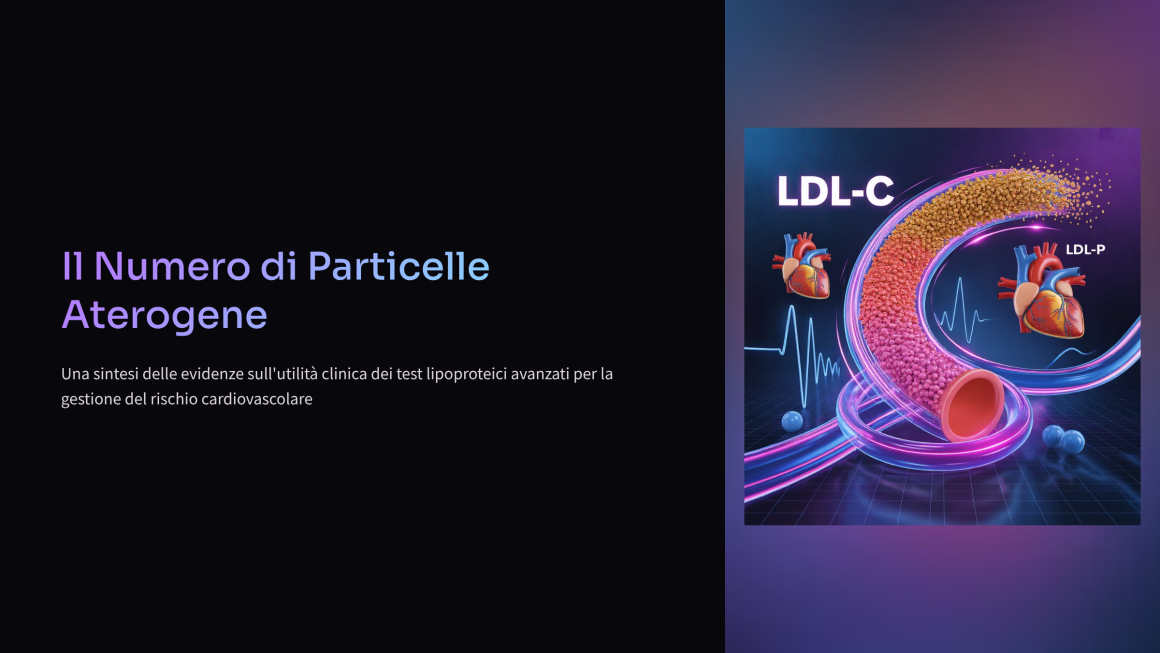

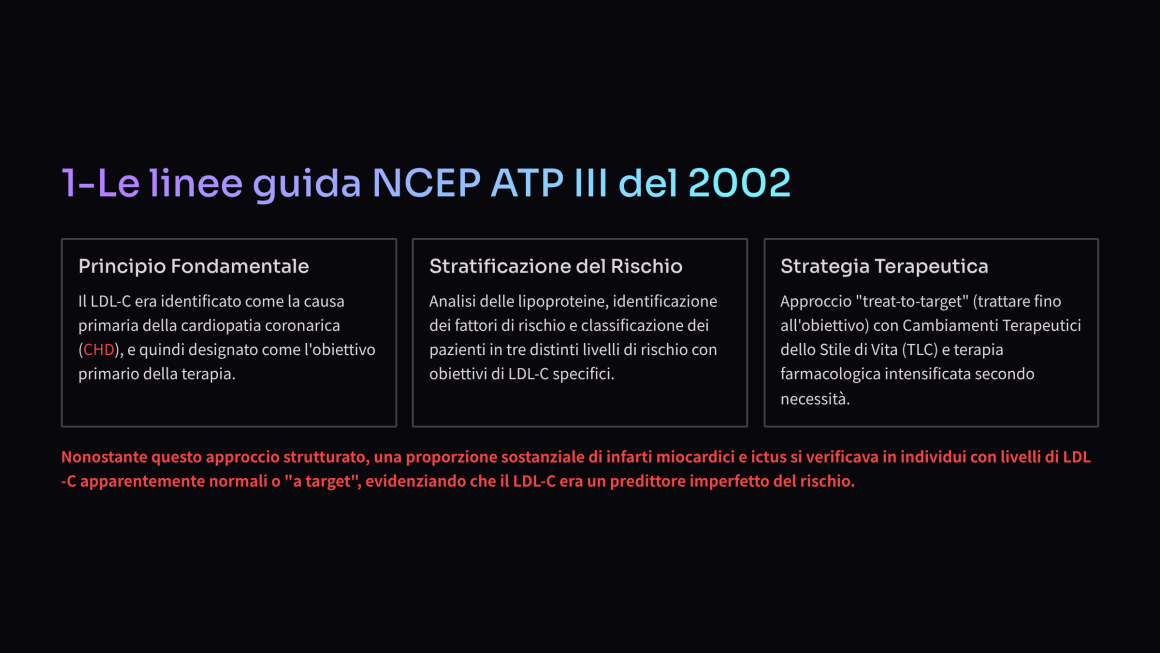
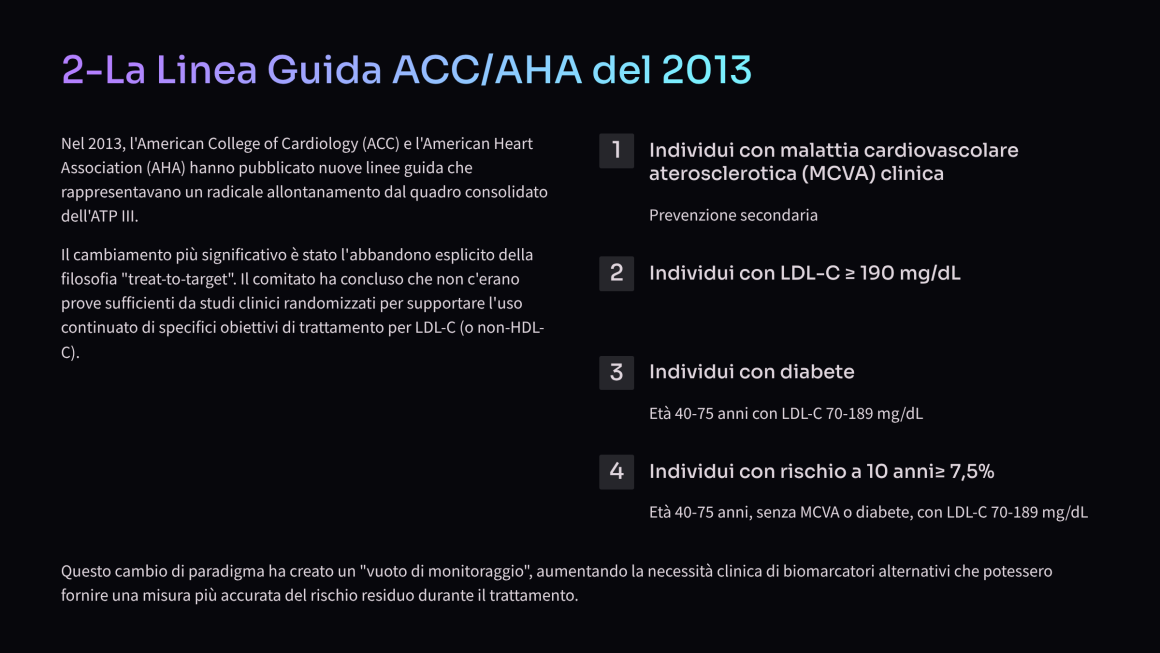
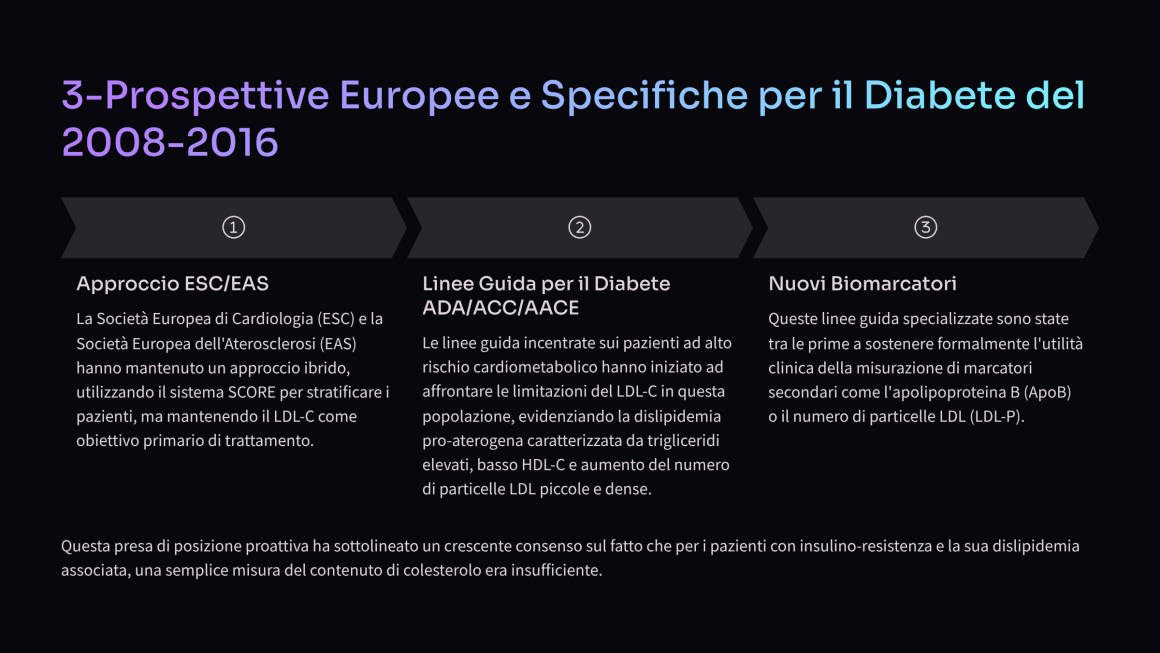
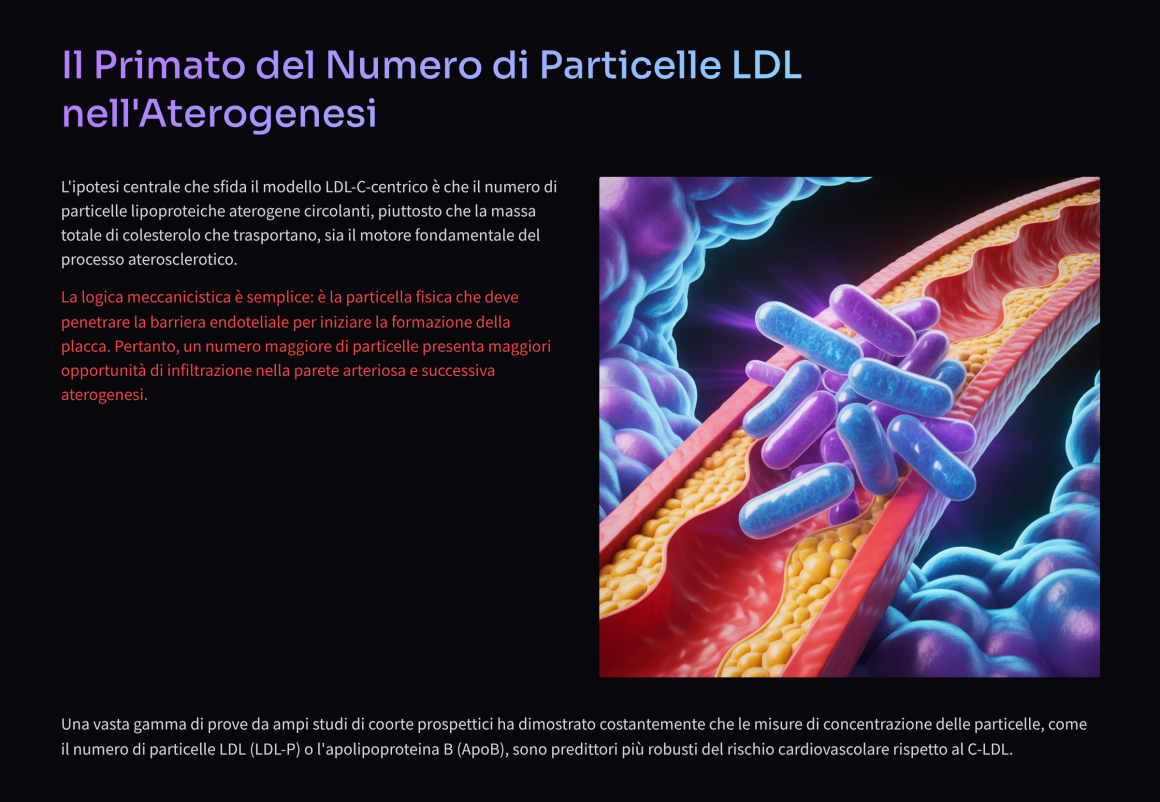
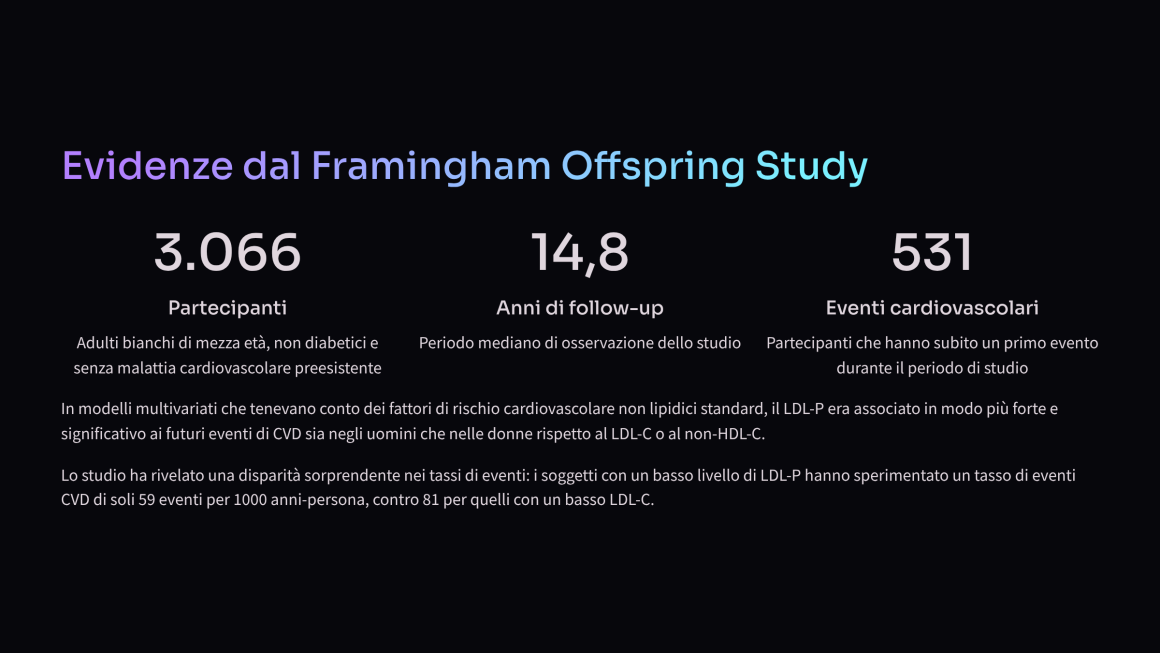

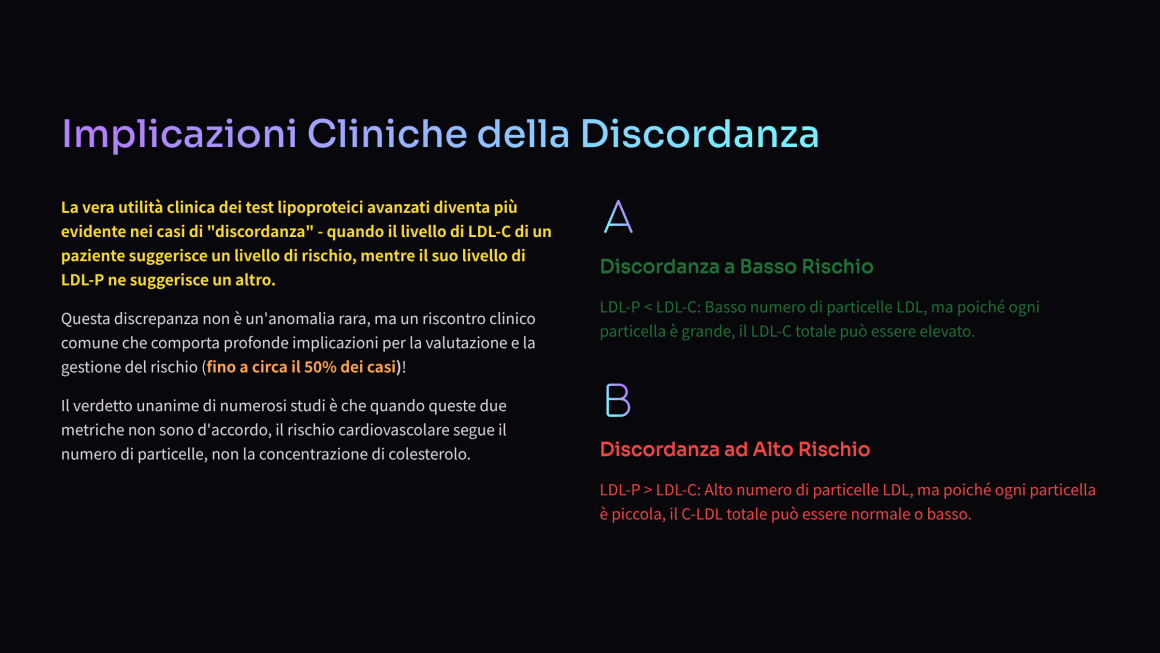
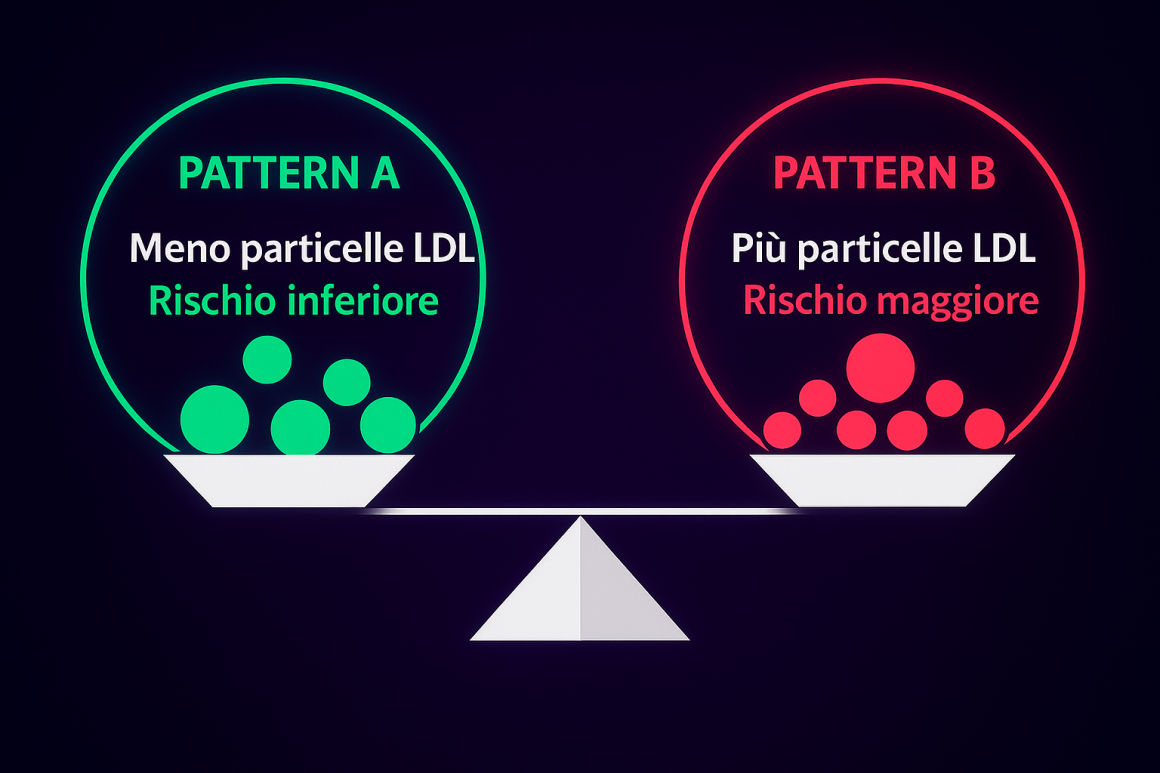
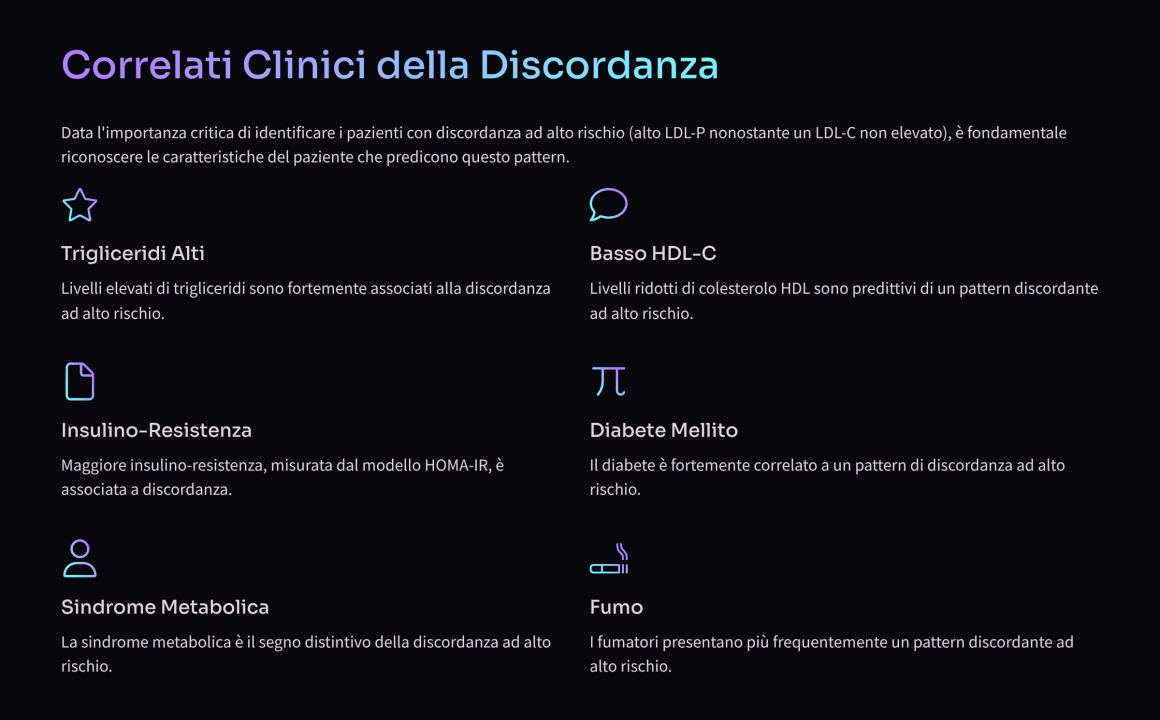
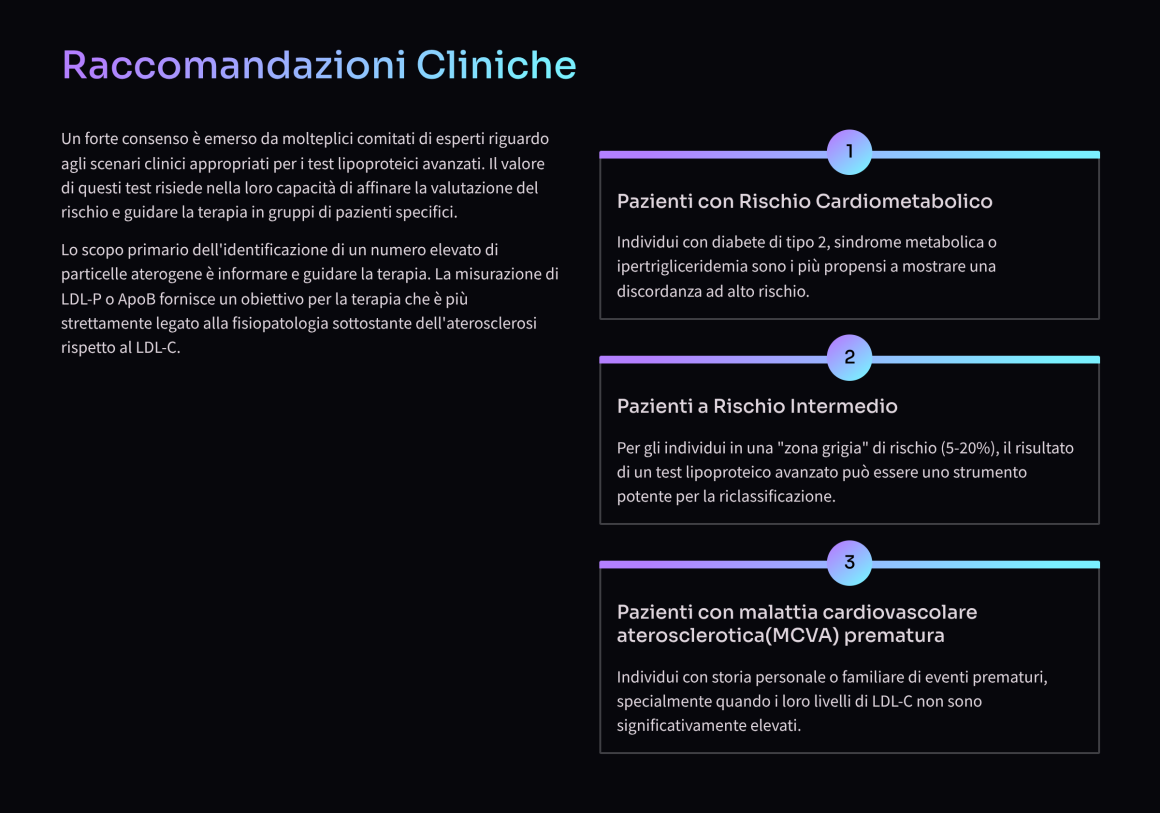
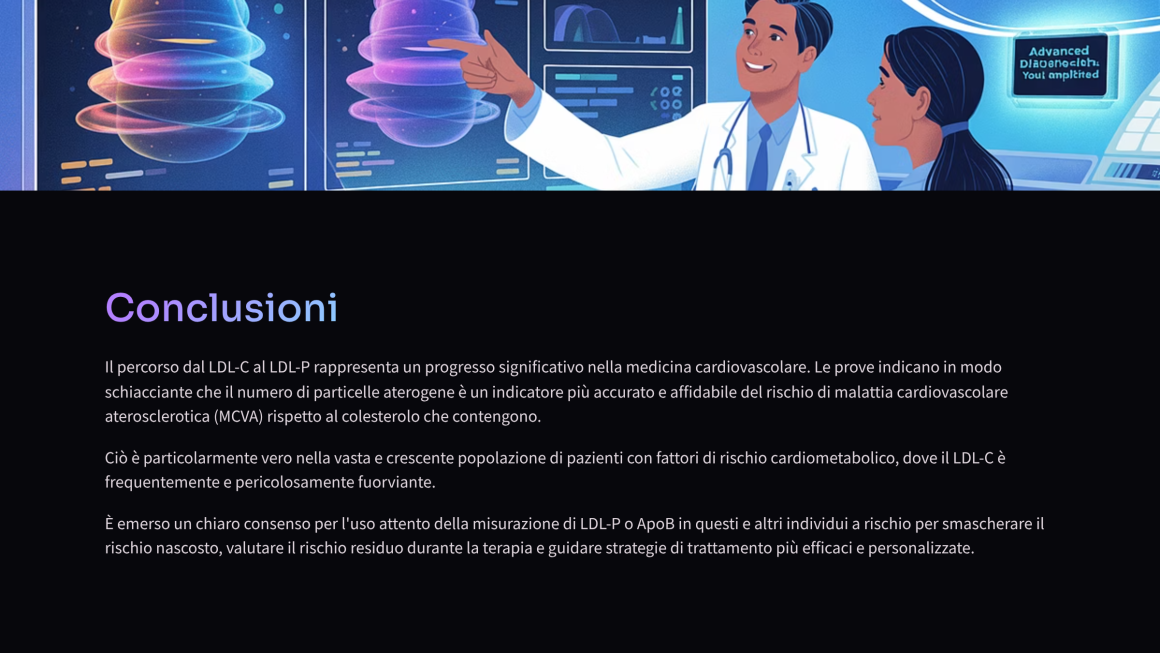
Se ti è piaciuto questo articolo:
ISCRIVITI ALLA NEWSLETTER
BIBLIOGRAFIA
Executive Summary of The Third Report of The National Cholesterol Education Program (NCEP) Expert Panel on Detection, Evaluation, And Treatment of High Blood Cholesterol In Adults (Adult Treatment Panel III)
Highlights of the new blood pressure and cholesterol guidelines, https://cdn.ymaws.com/www.oshp.net/resource/resmgr/2014_Annual_Meeting_Handouts/OSHP_4-14_(JohnsonJ)_HO_ONLI
(NCEP) Expert Panel on Detection, Evaluation, and Treatment of High Blood Cholesterol in Adults (Adult Treatment Pane lIII) – AEFA
Executive Summary of the Third Report of the National Cholesterol Education Program (NCEP) Expert Panel on Detection, Evaluation, and Treatment
Value of Low-Density Lipoprotein Particle Number and Size as Predictors of Coronary Artery Disease in Apparently Healthy Men and Women: The EPIC-Norfolk Prospective Population Study | JACC
2013 ACC/AHA Guideline on the Treatment of Blood Cholesterol to Reduce Atherosclerotic Cardiovascular Risk in Adults – American Stroke Association
2013 ACC/AHA Guideline on the Treatment of Blood Cholesterol to Reduce Atherosclerotic Cardiovascular Risk in Adults – American College of Cardiology
2013 ACC/AHA guideline on the treatment of blood cholesterol to reduce atherosclerotic cardiovascular risk in adults: a report of the American College of Cardiology/American Heart Association Task Force on Practice Guidelines
ESC/EAS Guidelines for the management of dyslipidaemias: The Task Force for the management of dyslipidaemias of the European Society of Cardiology (ESC) and the European Atherosclerosis Society (EAS)
2016 ESC/EAS Guidelines for the Management of Dyslipidaemias
2016 ESC/EAS Guidelines for the Management of Dyslipidaemias: The Task Force for the Management of Dyslipidaemias of the European Society of Cardiology (ESC) and European Atherosclerosis Society (EAS) Developed with the special contribution of the European Assocciation for Cardiovascular Prevention & Rehabilitation (EACPR)
ESC/EAS Guidelines for the management of dyslipidaemias – European Society of Cardiology, https://www.escardio.org/static-file/Escardio/Guidelines/publications/DYSLIPguidelines-dyslipidemias-FT.pdf
Lipoprotein management in patients with cardiometabolic risk: consensus statement from the American Diabetes Association and the American College of Cardiology Foundation
Lipoprotein Management in Patients With Cardiometabolic Risk. Consensus Conference Report From the American Diabetes Association and the American College of Cardiology Foundation
AACE COMPREHENSIVE DIABETES MANAGEMENT ALGORITHM, https://www.chfs.ky.gov/agencies/dph/dpqi/cdpb/Documents/AACEAlgorithim2013.pdf
AACE comprehensive diabetes management algorithm 2013 – PubMed, accesso eseguito il giorno luglio 23, 2025, https://pubmed.ncbi.nlm.nih.gov/23598536/
LCD – MolDX: Biomarkers in Cardiovascular Risk Assessment (L36129) – CMS https://www.cms.gov/medicare-coverage-database/view/lcd.aspx?lcdId=36129&ver=54
LDL Particle Number and Risk of Future Cardiovascular Disease in the Framingham Offspring Study – Implications for LDL Management – https://pubmed.ncbi.nlm.nih.gov/19657464/
LDL Particle Number and Risk of Future Cardiovascular Disease in the Framingham Offspring Study – Implications for LDL Management, accesso eseguito il giorno luglio 23, 2025, https://pmc.ncbi.nlm.nih.gov/articles/PMC2720529/
LDL Particle Number and Risk of Future Cardiovascular Disease in the Framingham Offspring Study – Implications for LDL Management
Letter by Kuller and Mackey Regarding Article, “Lipids and, accesso eseguito il giorno luglio 23, 2025, https://www.ahajournals.org/doi/10.1161/CIRCULATIONAHA.112.126961?doi=10.1161/CIRCULATIONAHA.112.126961
Discordance of Low-Density Lipoprotein (LDL) Cholesterol With Alternative LDL-Related Measures and Future Coronary Events | Circulation, accesso eseguito il giorno luglio 23, 2025, https://www.ahajournals.org/doi/10.1161/circulationaha.113.005873
Discordance of Low-Density Lipoprotein (LDL) Cholesterol With Alternative LDL-Related Measures and Future Coronary Events
Value of low-density lipoprotein particle number and size as predictors of coronary artery disease in apparently healthy men and women: the EPIC-Norfolk Prospective Population Study – PubMed, accesso eseguito il giorno luglio 23, 2025, https://pubmed.ncbi.nlm.nih.gov/17276177/
Clinical implications of discordance between low-density lipoprotein cholesterol and particle number – PubMed, accesso eseguito il giorno luglio 23, 2025, https://pubmed.ncbi.nlm.nih.gov/21392724/
Clinical implications of discordance between low-density lipoprotein cholesterol and particle number –
Discordance between non-HDL-cholesterol and LDL-particle measurements: results from the Multi-Ethnic Study of Atherosclerosis – PubMed, accesso eseguito il giorno luglio 23, 2025, https://pubmed.ncbi.nlm.nih.gov/23591415/
Nuclear magnetic resonance spectroscopy of lipoproteins and risk of coronary heart disease in the cardiovascular health study
Nuclear magnetic resonance spectroscopy of lipoproteins and risk of coronary heart disease in the cardiovascular health study – PubMed, accesso eseguito il giorno luglio 23, 2025, https://pubmed.ncbi.nlm.nih.gov/12117734/
Nuclear Magnetic Resonance Spectroscopy of Lipoproteins and Risk of Coronary Heart Disease in the Cardiovascular Health Study | Arteriosclerosis, Thrombosis, and Vascular Biology, accesso eseguito il giorno luglio 23, 2025, https://www.ahajournals.org/doi/10.1161/01.atv.0000022015.97341.3a
Association of Apolipoprotein B and Nuclear Magnetic Resonance Spectroscopy-Derived LDL Particle Number with Outcomes in 25 Clinical Studies: Assessment by the AACC Lipoprotein and Vascular Diseases Division Working Group on Best Practices
Discordance between LDL-C levels and LDL particle number – Biosfer Teslab, accesso eseguito il giorno luglio 23, 2025, https://biosferteslab.com/discordance-between-ldl-c-levels-and-ldl-particle-number/
“European Panel on Low Density Lipoprotein (LDL) Subclasses”: A Statement on the Pathophysiology, Atherogenicity and Clinical Significance of LDL Subclasses
Discordance between Apolipoprotein B and Low-density Lipoprotein Particle Number is Associated with Insulin Resistance in Clinical Practice
Description of Discordance Between LDL Cholesterol, Non-HDL Cholesterol, and LDL Particle Number Among Patients of a Lipid Clinic – DOAJ, https://doaj.org/article/9e9c28e91bb64376b6f223e5d10dfbca
Significance of Small Dense Low-Density Lipoprotein as a Risk Factor for Coronary Artery Disease and Acute Coronary Syndrome – PMC, accesso eseguito il giorno luglio 23, 2025, https://pmc.ncbi.nlm.nih.gov/articles/PMC2688162/
Comparison between Gradient Gel Electrophoresis and Nuclear Magnetic Resonance Spectroscopy in Estimating Coronary Heart Disease – CiteSeerX, accesso eseguito il giorno luglio 23, 2025, https://citeseerx.ist.psu.edu/document?repid=rep1&type=pdf&doi=c9f89fbc8f5610a4b0dbae08d71d363458ad9a5a
Small Dense Low-Density Lipoprotein for Risk Prediction of Acute Coronary Syndrome | Singh | Cardiology Research, accesso eseguito il giorno luglio 23, 2025, https://www.cardiologyres.org/index.php/Cardiologyres/article/view/1254/1246
Significance of Small Dense Low-Density Lipoprotein as a Risk Factor for Coronary Artery Disease and Acute Coronary Syndrome – Semantic Scholar, accesso eseguito il giorno luglio 23, 2025, https://pdfs.semanticscholar.org/5af7/c05177205f1385775083fb6d73033af54f2f.pdf
Association of small low-density lipoprotein particles with the incidence of coronary artery disease in men and women – PubMed, accesso eseguito il giorno luglio 23, 2025, https://pubmed.ncbi.nlm.nih.gov/8782636/
Association of lipids with coronary heart disease in a saudi population – SciELO, accesso eseguito il giorno luglio 23, 2025, https://www.scielo.br/j/jvb/a/KDQr9QwWdzLxrv3Gw6W6xtM/?lang=en
Significance of small dense low-density lipoprotein as a risk factor for coronary artery disease and acute coronary syndrome – PubMed, accesso eseguito il giorno luglio 23, 2025, https://pubmed.ncbi.nlm.nih.gov/16807992/
Relations of lipoprotein subclass levels and low-density lipoprotein size to progression of coronary artery disease in the Pravastatin Limitation of Atherosclerosis in the Coronary Arteries (PLAC-I) trial – PubMed
Small dense LDL particles – a predictor of coronary artery disease evaluated by invasive and CT-based techniques, accesso eseguito il giorno luglio 23, 2025, https://d-nb.info/1238454267/34
Low density lipoprotein particle size and risk of early-onset myocardial infarction in women – PubMed, accesso eseguito il giorno luglio 23, 2025, https://pubmed.ncbi.nlm.nih.gov/11384949/
A prospective study of triglyceride level, low-density lipoprotein particle diameter, and risk of myocardial infarction – PubMed, accesso eseguito il giorno luglio 23, 2025, https://pubmed.ncbi.nlm.nih.gov/8782637/
Low-density lipoprotein particle size, triglycerides, and high-density lipoprotein cholesterol as risk factors for coronary heart disease in older Japanese-American men – PubMed, accesso eseguito il giorno luglio 23, 2025, https://pubmed.ncbi.nlm.nih.gov/10946034/
Low-density lipoprotein size, pravastatin treatment, and coronary events – PubMed, accesso eseguito il giorno luglio 23, 2025, https://pubmed.ncbi.nlm.nih.gov/11572739/
Lipoprotein Subclasses and Particle Concentration and Cardiovascular Disease Risk – CiteSeerX, accesso eseguito il giorno luglio 23, 2025, https://citeseerx.ist.psu.edu/document?repid=rep1&type=pdf&doi=f54963d3e16c31dbed9ef491fc159945cc5e98a3
Low-Density Lipoprotein Subfractions and the Long-Term Risk of Ischemic Heart Disease in Men: 13-Year Follow-Up Data From the Quebec Cardiovascular Study
Low-density lipoprotein subfractions and the long-term risk of ischemic heart disease in men: 13-year follow-up data from the Québec Cardiovascular Study – PubMed, accesso eseguito il giorno luglio 23, 2025, https://pubmed.ncbi.nlm.nih.gov/15618542/
High-Density Lipoproteins – J-Stage, accesso eseguito il giorno luglio 23, 2025, https://www.jstage.jst.go.jp/article/circj/77/10/77_CJ-13-1025/_article
Lipoprotein subclasses and coronary artery calcium in postmenopausal women from the healthy women study – PubMed
High-density lipoprotein subclasses and their relationship to cardiovascular disease – PubMed, accesso eseguito il giorno luglio 23, 2025, https://pubmed.ncbi.nlm.nih.gov/23312047/
Lipoprotein Particles, Insulin, Adiponectin, C-Reactive Protein and Risk of Coronary Heart Disease among Men with Metabolic Syndrome – PMC
Lipoprotein particles, insulin, adiponectin, C-reactive protein and risk of coronary heart disease among men with metabolic syndrome – PubMed, accesso eseguito il giorno luglio 23, 2025, https://pubmed.ncbi.nlm.nih.gov/17011566/
Response to Letter Regarding Article,” High-Density Lipoprotein Cholesterol, Size, Particle Number, and Residual Vascular Risk After Potent Statin Therapy”
High-Density Lipoprotein Cholesterol, Size, Particle Number, and Residual Vascular Risk After Potent Statin Therapy
Lipoprotein Genotype and Conserved Pathway for Exceptional Longevity in Humans | PLOS Biology – Research journals, accesso eseguito il giorno luglio 23, 2025, https://journals.plos.org/plosbiology/article?id=10.1371/journal.pbio.0040113
Unique lipoprotein phenotype and genotype associated with exceptional longevity – PubMed
Unique lipoprotein phenotype and genotype in humans with exceptional longevity
Low-Density Lipoprotein Particle Concentration and Size as Determined by Nuclear Magnetic Resonance Spectroscopy as Predictors of Cardiovascular Disease in Women, accesso eseguito il giorno luglio 23, 2025, https://www.ahajournals.org/doi/10.1161/01.cir.0000033222.75187.b9
CARDIO Test INFAI® – for Cardiac Risk Assessment, accesso eseguito il giorno luglio 23, 2025, https://www.infai1.de/uploads/USER/154/files/CTI_Booklet_A4-EN-20151209.pdf
Comparison between Gradient Gel Electrophoresis and Nuclear Magnetic Resonance Spectroscopy in Estimating Coronary Heart Disease Risk Associated with LDL and HDL Particle Size
Comparison of four methods of analysis of lipoprotein particle subfractions for their association with angiographic progression of coronary artery disease, accesso eseguito il giorno luglio 23, 2025, https://pmc.ncbi.nlm.nih.gov/articles/PMC3990359/
Comparison of four methods of analysis of lipoprotein particle subfractions for their association with angiographic progression of coronary artery disease – PubMed, accesso eseguito il giorno luglio 23, 2025, https://pubmed.ncbi.nlm.nih.gov/24603218/
Comparison between gradient gel electrophoresis and nuclear magnetic resonance spectroscopy in estimating coronary heart disease risk associated with LDL and HDL particle size – PubMed, accesso eseguito il giorno luglio 23, 2025, https://pubmed.ncbi.nlm.nih.gov/20348400/
Reference values assessment in a Mediterranean population for, accesso eseguito il giorno luglio 23, 2025, https://www.tandfonline.com/doi/pdf/10.2147/VHRM.S132475
Clinical utility of inflammatory markers and advanced lipoprotein testing: Advice from an expert panel of lipid specialists, accesso eseguito il giorno luglio 23, 2025, https://beta.lipid.org/sites/default/files/articles/expert_panel_paper.pdf
Utility of Advanced Lipoprotein Testing in Clinical Practice – PubMed, accesso eseguito il giorno luglio 23, 2025, https://pubmed.ncbi.nlm.nih.gov/27099901/
Clinical utility of inflammatory markers and advanced lipoprotein testing: advice from an expert panel of lipid specialists – PubMed, accesso eseguito il giorno luglio 23, 2025, https://pubmed.ncbi.nlm.nih.gov/21981835/
The role of advanced lipid testing in clinical practice – PubMed, accesso eseguito il giorno luglio 23, 2025, https://pubmed.ncbi.nlm.nih.gov/17917521/
Cardiovascular risk in patients achieving low-density lipoprotein cholesterol and particle targets – PubMed, https://pubmed.ncbi.nlm.nih.gov/24956532/
Clinical- and cost-effectiveness of LDL particle-guided statin therapy: a simulation study, https://pubmed.ncbi.nlm.nih.gov/25050538/
AVVERTENZE
Le informazioni contenute in questo sito sono solo a scopo didattico. Questo sito non fornisce e non può fornire consulenza medica. Non deve essere usato come sostituto delle cure mediche e dei consigli del tuo medico. Potrebbero esserci variazioni sul trattamento che il medico può raccomandare in base a fatti e circostanze individuali. La medicina è una scienza dinamica e dovrebbe essere considerata di conseguenza. Queste informazioni non devono essere utilizzate per diagnosticare o trattare alcuna condizione. Non siamo responsabili per il modo in cui utilizzi e implementi le informazioni che ricevi. Questo sito è destinato all’uso solo da parte di adulti sani. Il Sito non è destinato all’uso da parte di minori, donne in gravidanza o individui con qualsiasi tipo di condizione di salute.
NON IGNORARE MAI I CONSIGLI MEDICI PROFESSIONALI A CAUSA DI QUALCOSA CHE HAI LETTO SU QUESTO SITO. NON AFFIDARTI MAI ALLE INFORMAZIONI CHE HAI RICEVUTO SU QUESTO SITO INVECE DI CERCARE UNA CONSULENZA MEDICA PROFESSIONALE. CONTATTA SEMPRE IL TUO MEDICO DI FIDUCIA E CHIEDI IL SUO PARERE SULLE INFORMAZIONI CHE LEGGI SU QUESTO SITO. LEGGI SU QUESTO SITO SENZA IL PARERE DEL TUO MEDICO DI FIDUCIA. NON UTILIZZARE QUESTO SITO PER LE EMERGENZE MEDICHE.


